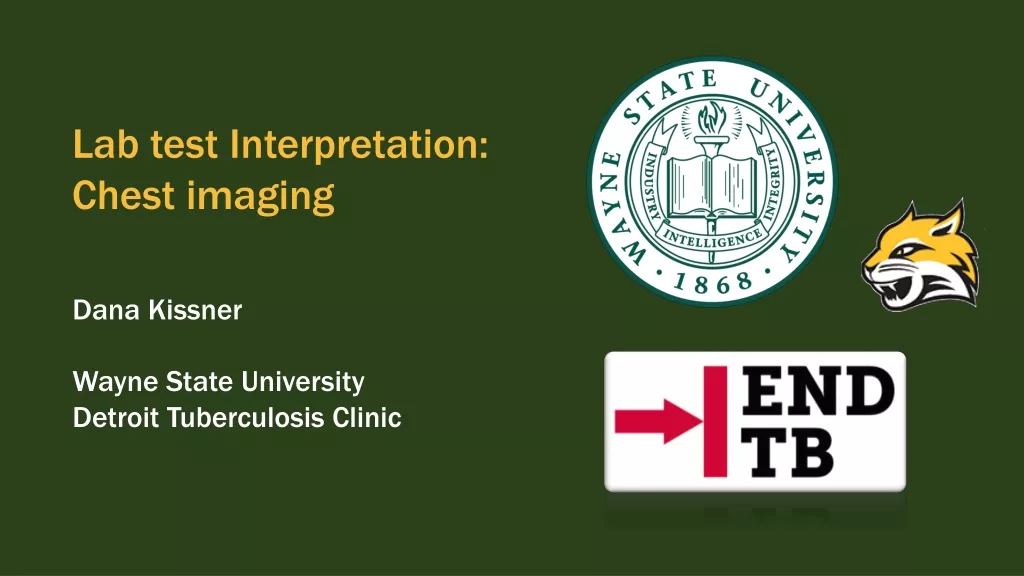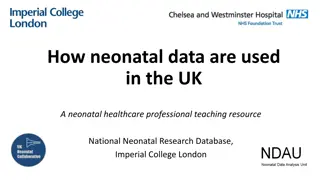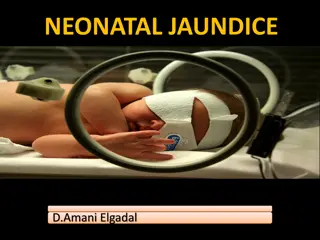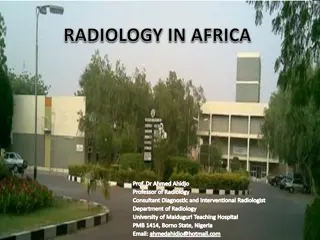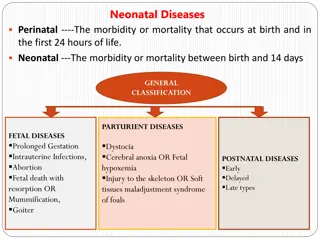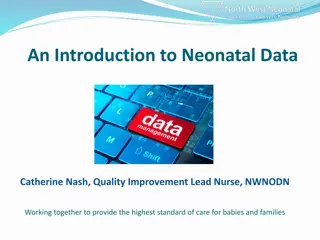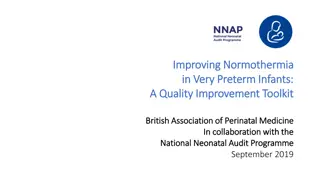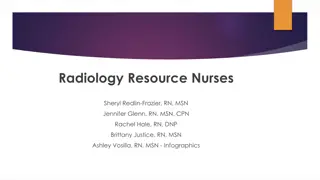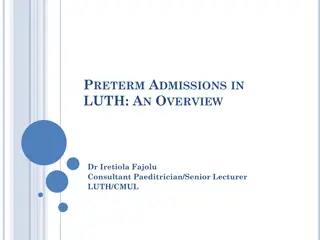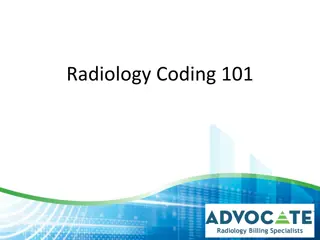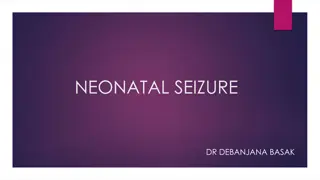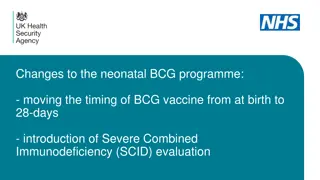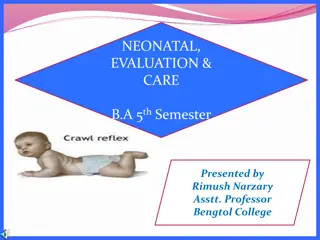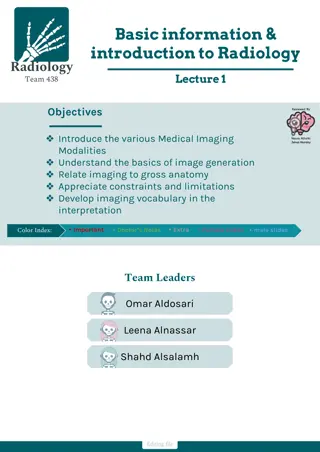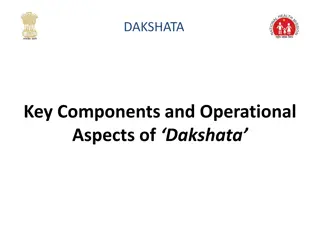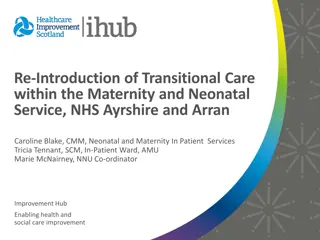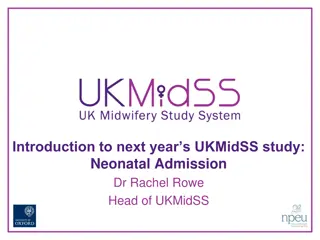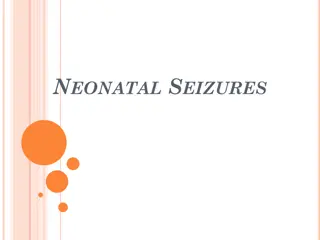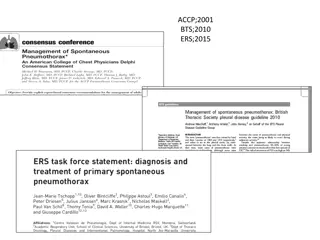Neonatal Chest Radiology: Techniques and Findings
Neonatal chest radiology is crucial for diagnosing and treating respiratory distress diseases. Explore the normal features and potential complications seen in neonatal chest X-rays, along with common causes of respiratory distress. Learn to identify diseases like Respiratory Distress Syndrome (RDS) and understand the importance of proper tube placement in acutely ill neonates.
Download Presentation

Please find below an Image/Link to download the presentation.
The content on the website is provided AS IS for your information and personal use only. It may not be sold, licensed, or shared on other websites without obtaining consent from the author.If you encounter any issues during the download, it is possible that the publisher has removed the file from their server.
You are allowed to download the files provided on this website for personal or commercial use, subject to the condition that they are used lawfully. All files are the property of their respective owners.
The content on the website is provided AS IS for your information and personal use only. It may not be sold, licensed, or shared on other websites without obtaining consent from the author.
E N D
Presentation Transcript
Techniques Disease Radiological findings
Chest techniques 1. Plain chest X-ray CXR & Fluoroscopy. 2. Computed Tomography Scan CT Scan. 3. High resolution CT HRCT 4. Magnetic resonance images MRI 5. Angiography ( conventional, CT, MRI) 6. Ultrasonographic scan USS
The normal neonatal NN chest X-ray has the following features: - Thymus : may be prominent. - Heart shadow : is quite prominent & globular in - outline - - Normal cardiothoracic ratio is up to 65%. -Diaphragms : normally lie at the level of the 6th rib anteriorly .
Finally, it should be remembered that acutely ill neonates may have various tubes and vascular catheter visible on CXR and it is important to be checked & to be correctly positioned as : - Endotracheal tube: tip is 5 cm above carina. - Nasogastric tube: ends few 10cm distal to GE junction Below Lt. Hemidiaphragm. - Umbilical artery catheter: tip in lower thoracic aorta T6-T10 away from renal artery origins. - Umbilical vein catheter: tip at T8-T9 lower right atrium
Complications - malposition of nasogastric tube into the trachea and bronchus can lead to pneumonia and pulmonary laceration. -vascular catheters can cause perforation of the vessel and thrombosis
Causes of Respiratory NN distress disease: Medical causes : 1. Respiratory Distress Syndrome(RDS): surfactant deficiency 2. Transient Tachypnea of newborn 3. Meconium aspiration syndrome 4. Neonatal pneumonia Surgical causes : 1. Congenital diaphragmatic hernia 2. Congenital Cystic Adenomatoid Malformation 3. Congenital lobar emphysema 4. Sequestration
Respiratory Distress Syndrome RDS - Also known as surfactant- deficiency disorders. - Is a relatively common condition resulting from insufficient production of surfactant lead to increase in the surface tension of alveoli causing alveolar collapse. - Usually present in the 1stfew hours of life in premature baby with symptoms like: tachypnea, expiratory grunting, nasal flaring & the baby may or may not cyanosed. - -
CXR findings: - bilateral symmetrical reticulo-granular densities with air bronchogram. - lung whiteout in severe cases. Treatment: - Surfactant administration - Antibiotic coverage - Chest intubation in severe cases.
Transient Tachypnea of NN TTN - is delayed clearance of intra-uterine pulmonary fluids - post C-section or prolonged vaginal delivery - wet lung with small amount of pleural effusion - has rapid recovery after 2-3 days. - treated by Antibiotics & intubation is usually not required
Meconium aspiration syndrome - Meconium is staining of amniotic fluid - because of its thick consistency, it is aspirated in tracheo-bronchial tree causing obstruction & asymmetrical lung atelectasia, (i.e it acts as Foreign body) . - usually treated by intubation & Antibiotic coverage.
Neonatal Pneumonia -caused by streptococcus bacterial infection - CXR may mimic Meconiumaspiration syndrome or similar to RDS as patches of Reticulo-granular densities. - treated by Antibiotics.
Complications of respiratory distress disease 1. Acute complications : - pulmonary interstitial emphysema & O2 toxicity: from treatment -pneumothorax : post intubation - pulmonary hemorrhage 2. Chronic complications : - bronchopulmonarydysplasia - recurrent chest infection - subglotticstenosis post intubation
Congenital diaphragmatic hernia CDH - is a defect in the diaphragm that result in herniation of abdominal contents into the thoracic cavity & has 2 types Bochdalek hernia : more common in Lt. side (75%) Morgagni hernia : common on Rt. Anterior & central - both need surgical intervention.
Congenital cystic adenomatoid malformation CCAM - congenital large pulmonary cyst >2cm surrounded by multiple smaller cysts. - if there is significant mass effect in the chest, CCAM is surgically removed. - CXR : cystic lesion of air density & may contain air-fluid level or may appear as solid lesion. - CT scan chest is modality of choice
Congenital lobar emphysema CLE - overexpansion of one or more lobes - commonly effect Lt. upper & Rt. Middle lobe - CXR : hyperlucentaffected lobes - CT scan is modality of choice for diagnosis - treated by surgical resection
Pulmonary sequestration - is a lung tissue that is not connected to tracheobronchial tree. - has systemic blood supply from Aorta mainly - venous drainage either from IVC or pulm. Veins - has 2 types : intralobar & extralobarwhich commonly present in NN & can cause RDS - CT, MRI or Angiography are modality of choice for diagnosis.
The differential diagnosis of neonatal respiratory - distress sign & symptoms;. -When assessing a neonatal chest X-ray (CXR) the clinical setting should always be borne in mind: *In distress premature infant with respiratory distress, - hyaline membrane disease will be the most likely diagnosis. - * in distressed full term neonate following cesarean; Retained lung fluid TTS will be the most common diagnosis. * in full term delivery with meconium-stained liquor; Meconium aspiration syndrome is suggested diagnosis.


